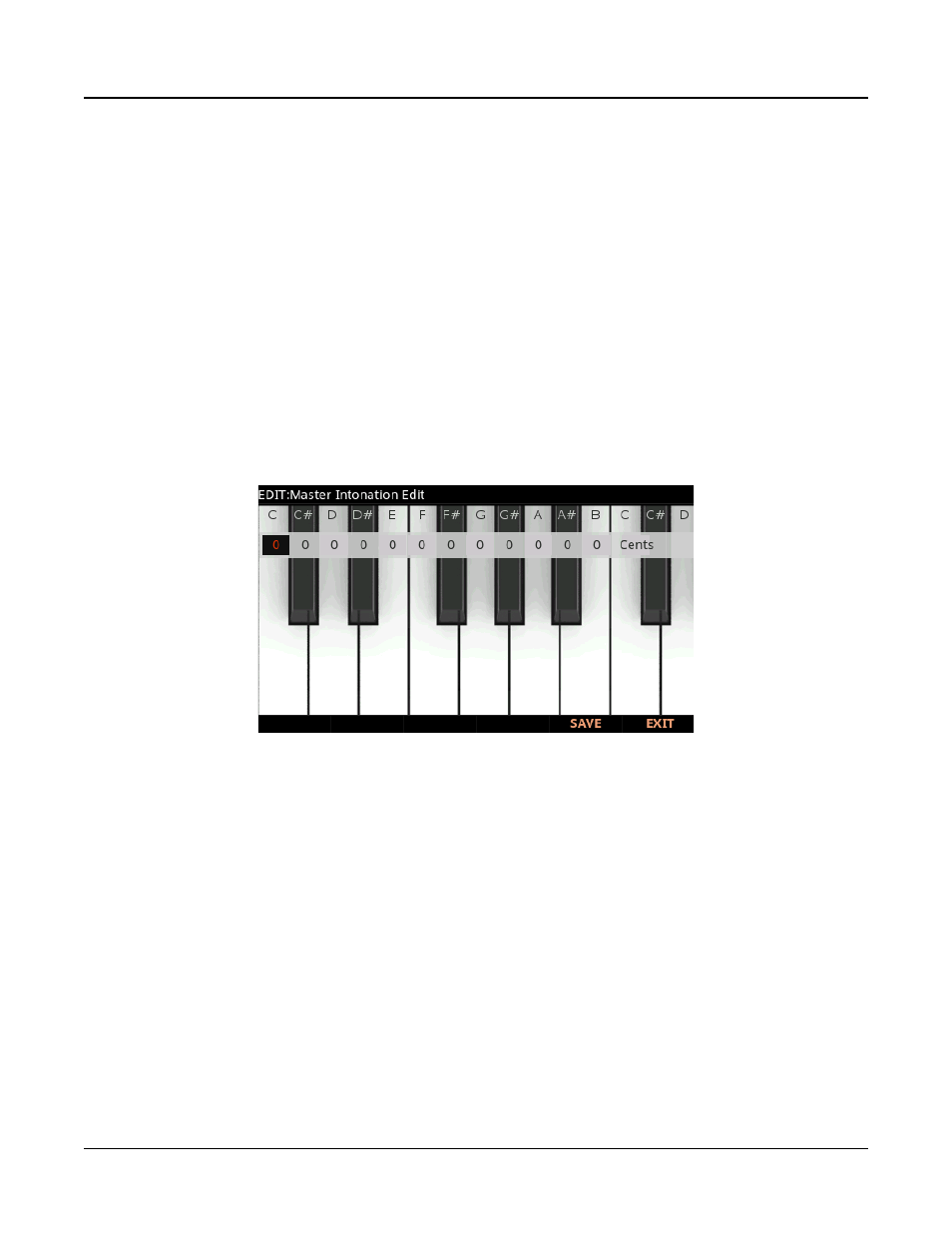Editing intonation maps, Int. key (intonation key), Editing intonation maps -12 – Kurzweil Forte User Manual
Page 302: Int. key (intonation key) -12, Editing, For mor

Global Mode
MAIN2 Page
12-12
Editing Intonation Maps
To edit an intonation map or create a new map, the Global mode User Type parameter
must be set to Advanced. Select an existing map and press the Favorites 1 button to view the
intonation editor (see below.) Intonation maps are based around a root key, use the Channel
up/down buttons to change the root key, and the layout of keys will shift in the display
(this is the same as changing the Int.Key parameter (see Intonation Key (Int.Key) below.)
Intonation Key is not saved with the intonation map.) Use the cursor to move between notes.
Each note can be shifted by ± 200 cents (100 cents=1 half‐step.) Use the alpha wheel, or
plus/minus buttons to enter the desired cent shift amount for each note.
Press the Save soft button to bring up the save dialog which allows you to rename the map
and choose an ID to save to. Edited user intonation maps can be saved to IDs 32-127. Press
the Exit soft button to return to the Global Main 2 page without saving your changes. When
exiting the editor, it will automatically give you the option to save the map if changes have
been made.
Int. Key (Intonation Key)
This sets the tonic, or base note from which the currently selected intonation map calculates
its intervals. If you select G as the intonation key, for example, and the intonation map you
select tunes the minor 2nd down by 50 cents, then G# will be a quartertone flat relative to
equal intonation. If you change the intonation key to D, then D# will be a quartertone flat.
If you use nonstandard intonations, you’ll want to set Int.Key to the key you’re playing in.
If the Intonation parameter is set to Equal, changing Int.Key has no effect.